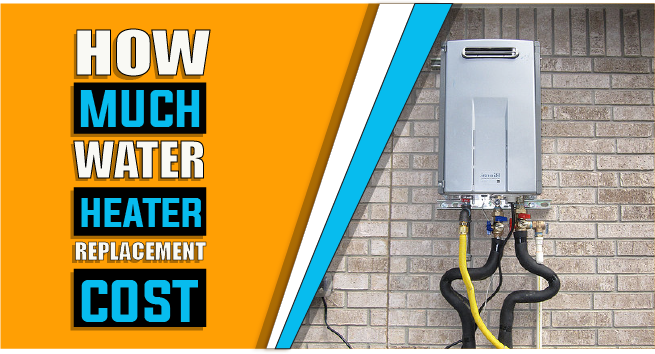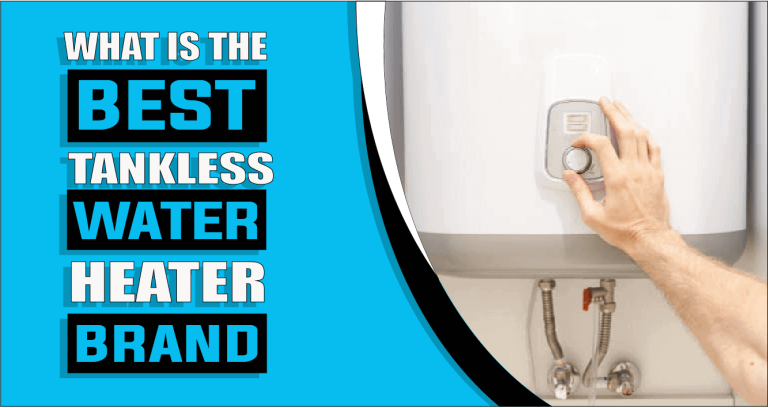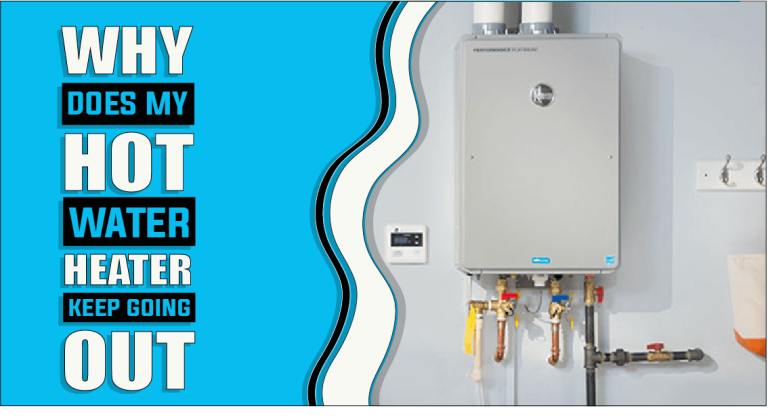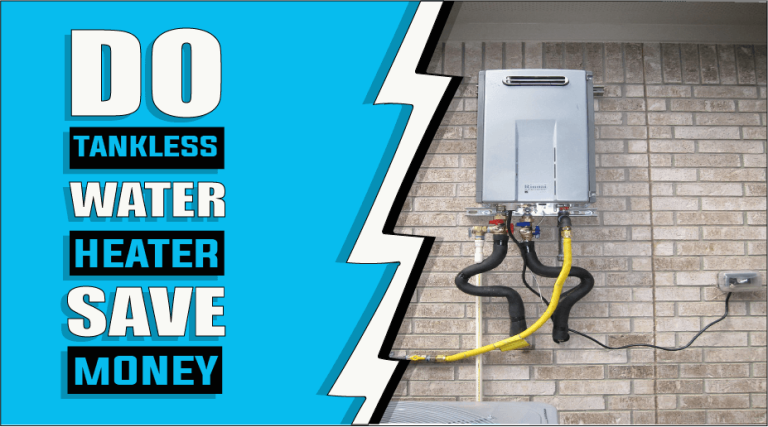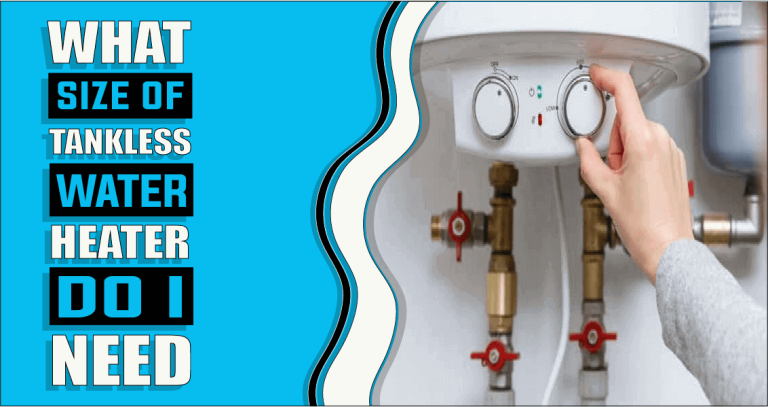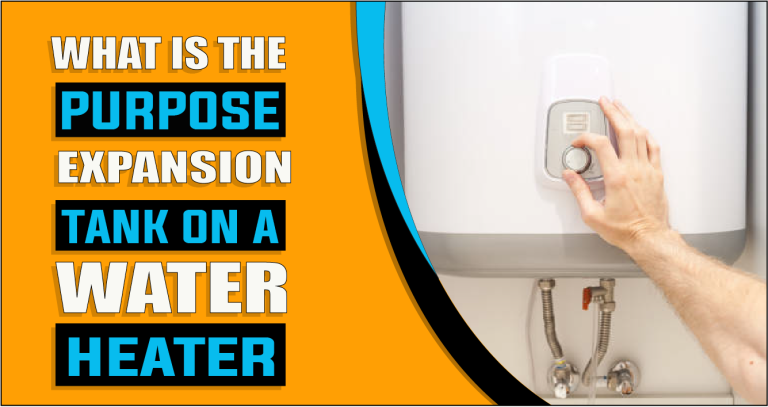Can Tankless Water Heaters Be Installed Inside – The Truth Reveals
If you’re looking for a way to heat water in your home while also conserving energy, you may have considered a tankless water heater. Not only are these efficient and cost-effective heating solutions, but they can also be installed nearly anywhere in the house. There are many considerations when it comes to the installation of a tankless water heater, ranging from safety and location to cost. We understand how important it is that you make the right decision for your home and budget. By all means, they can be installed inside and outside of your home. There are several viable setup options available for installing tankless water heaters inside. In this blog post, we’ll be looking at all of these aspects and ultimately answer the question: can tankless water heaters be installed inside? We will take you through different locations for installing a tankless water heater inside, what you need to know about installing tankless water heaters indoors, and why doing so could be a great fit for your home’s needs. So keep reading to get all your questions answered!

Let’s explore can tankless water heaters be installed inside.
Yes, tankless water heaters can be installed inside the home. This is becoming increasingly popular as it provides hot water on demand and eliminates the need for a storage tank. Installing a tankless water heater inside can be an ideal solution for homeowners or businesses who want to save space and energy. Tankless water heaters provide a continuous supply of hot water, and they are both more efficient and more compact than traditional tanks. They can be powered by either natural gas or electricity, depending on the model chosen.
Tankless water heaters require an adequate amount of ventilation but can usually be installed in any room of the house, including closets and attics. The installation process consists of connecting the heater to the gas line or electric meter, running the necessary pipe connections from the heater to the sink or shower, and installing the venting system for exhaust gases. When done correctly, tankless water heaters provide hot showers immediately with no wait time for hot water to refill into a tank.
Additionally, tankless water heaters can reduce energy consumption by up to 40%, meaning that their users will also benefit from lower utility bills in addition to saving valuable space in their homes. And the important thing to take into account is local building codes before installing a tankless water heater indoors and some units also require professional installation due to safety risks associated with improper installation.
Prime Locations For Installing Tankless Water Heaters Inside
If you are planning to install a tankless water heater inside the house, you must be queried what is the best place to install it. Tankless water heaters can be installed in almost any room or closet space, as long as there’s enough room for plumbing and venting. But some of the preferred locations when installing tankless water heaters indoors include:
1: Install on or Close to Exterior Wall
One of the best locations to install a tankless water heater is on or close to an exterior wall. This is advantageous because there will be less piping needed and it will make the entire process simpler. Additionally, the exterior wall helps to protect the unit from freezing temperatures and other elements that could cause damage over time.
2: Locate it Close to Water Inlets and Power Source
When installing a tankless water heater, it is important to locate it close to both water inlets and a power source, such as an electrical outlet. Not only does this make it easier for installation, but it can also help keep your energy bills lower as it reduces unnecessary wiring. Furthermore, if you are installing two separate units, ensuring that they are close to one another can help maintain even hot water temperatures throughout your home.
3: Near the Kitchen Sink
Another prime location for installing a tankless water heater inside is near the kitchen sink. This will allow you to have hot water on demand at any time and make daily tasks such as washing dishes, preparing food, and cleaning up much more efficient. Additionally, this is an ideal spot because the kitchen usually contains several pipes, making it easier to give the tankless heater access to a water supply line.
4: Next to Laundry Machines In Utility Rooms or Basements
Tankless water heaters can also be installed next to laundry machines in utility rooms or basements. This way, you can be sure that every load of laundry will have enough hot water for thorough cleaning without needing to wait for the large storage tanks to heat up before use. Plus, depending on where this room is located in your house, you may be able to use existing ventilation systems that already exist there to get rid of any fumes that could be present from the machine’s operation.
5: In Bathrooms
The bathroom is also another spot for installing the tankless water heater. This installation allows for fast access to hot water for activities such as showering and bathing without wasting excess energy heating up large amounts of storage space each time it’s used. Furthermore, this location makes sense if you want quick access to hot water when brushing your teeth or washing your hands in between tasks throughout the day.
6: Garage
The garage area provides ample space for installation and protection from any outside elements, plus many garages have easy access to both water inlets and power sources. If you have limited space in your garage or are trying to conserve as much room as possible for storage, consider mounting your tankless heater on the wall!
7: Attic
Lastly, attic spaces are also ideal for installing tankless heaters thanks to their out-of-the-way location. This makes them less visible than other areas of your home while still having easy access to both power and water sources. However, before you install any type of heating device in your attic please check with local codes and regulations first, some may not allow this because of safety concerns related to combustion gases being released inside living spaces below them.
The Best Practices For Installing A Tankless Water Heater Inside Your Home
When it comes to installing a tankless water heater inside your home, here are some of the best practices that you must have to perform. By following these best practices, you can ensure that your indoor tankless water heater is installed safely and properly to help provide hot water to your home.
1: Choose an Experienced Professional to Install the Unit Properly
If you’re planning on installing a tankless water heater inside your home, it’s important to make sure that it is installed properly. To do this, consider hiring an experienced professional who understands the proper installation techniques and safety standards required. This will help ensure that your unit is installed properly and safely, so you can enjoy its benefits for years to come.
2: Select an Appropriately Sized Unit for Your Home’s Needs
When selecting a tankless water heater for indoors, it’s important to make sure that you choose the right size and capacity for your needs. Too small of a unit will not be able to keep up with the demand in your home while too large of one could cost you more money than necessary. Therefore, consider factors such as the available space in your home, how many bathrooms it has, and how much hot water usage you anticipate before selecting a tankless water heater size for your house.
3: Make Sure to Provide Ample Ventilation for the Unit
It’s also important to provide ample ventilation for the tankless water heater so that the exhaust fumes are properly vented out of your living space. This can be done by installing a dedicated vent that runs up through the roof or wall. This will help prevent carbon monoxide poisoning and ensure the proper functioning of your indoor tankless water heater.
4: Place the Unit in an Appropriate Room away From Moisture and Vents
Finally, when selecting a room to install your tankless water heater indoors, it’s important to make sure that you pick one away from vents, moisture sources, and other heat-producing appliances. This will help ensure proper functioning while also avoiding any potential issues related to excess heat or moisture buildup.
How to install a tankless water heater inside?
Installing a tankless water heater inside your home can be a complex process that requires professional experience and knowledge. Here is an overview of the steps involved in installing a tankless water heater:
What do you need?
Before you begin the installation process, make sure to have all of the necessary parts and materials available. These include:
- A tankless unit
- Electrical wiring
- Fittings such as elbows and T’s
- Copper or flexible gas line (if needed)
- Venting material
Instructions:
1: Determine the location –
The location of your tankless water heater is important. You should choose a place that can accommodate all of the necessary parts and materials for installation. The ideal spot would be near an existing gas or electric line, as well as close to where most hot water fixtures are located in your home.
2: Prepare the Wall –
Once you’ve determined the location of your tankless water heater, it’s time to prepare the wall where it will be mounted. You should make sure that there is a sufficient amount of open space for all of the necessary components. If needed, use drywall anchors or other mounting hardware to secure the unit in place.
3: Connect the Water Lines –
The next step is to connect the water lines that will supply the tankless unit with hot and cold water. This can be done by installing copper pipes or a flexible gas line, depending on the type of connection you need.
4: Connect Power –
Depending on the type of tankless water heater you have, you may need to connect it to an electrical source. This can be done by running wiring from the unit to a dedicated circuit breaker or power outlet. Make sure that all connections are secure and that there is no risk of shock before proceeding.
5: Venting –
For tankless water heaters that require venting, you should install the appropriate materials. This could include PVC piping or other exhaust components that are designed for this purpose. Make sure all connections are secure before proceeding to the next step.
6: Test for Leaks –
Once all of the connections and venting are complete, you should test the system for leaks. Make sure to check all of the connections both inside and outside of your home. If any leaks are detected, they should be fixed before using the tankless water heater.
7: Turn on the Power –
Once all of the connections are secure and tested, you can turn on the power to your tankless unit. This will allow it to start heating water for use in your home. Make sure to check the instructions that came with your unit for any specific instructions or safety measures before using it.
8: Set the temperature –
Finally, you can set the temperature on your tankless water heater. Depending on your unit, this may require adjusting a knob or pressing a button. Refer to the instructions that came with your unit for more information on how to adjust the temperature correctly.
These are the steps involved in installing a tankless water heater inside your home. While it can be complex and time consuming, with the right preparation and knowledge, you can do it yourself. Just make sure to read the instructions carefully and consult a professional if you have any questions or concerns.
Benefits of Installing a Tankless Water Heater Inside
Installing a tankless water heater inside has numerous benefits, such as:
1: Easier Access to Hot Water on Demand
Having a tankless water heater installed inside allows for much easier access to hot water. This type of water heater is capable of providing an endless supply of hot water. You can just turn on the tap and get hot water right away. This makes it perfect for people who need instant access to hot water, such as those with large families or those who enjoy long, hot showers.
2: Reduced Energy Bills Due to Less Wiring
Installing a tankless water heater inside the house can also help reduce energy costs. Compared to traditional tank-style heaters, these types require less wiring and are more efficient at heating up and delivering hot water quickly. The reduced number of wires involved also means fewer points where electricity can be lost, resulting in lower energy bills over time. Additionally, since these heaters do not store all their heated water in a tank, so you don’t ever have to worry about wasting energy. All of these factors come together to provide significant savings on your energy bill each month.
3: Easy Access to Water Inlets and Power Sources
Another benefit of installing a tankless water heater indoors is that they provide easy access to both the power source and the incoming cold-water supply line. This makes them easy and convenient for any necessary maintenance or repairs that may occur over time due to regular wear and tear or other issues with the system.
4: Significant Savings On Space
The tankless water heater also offers significant savings on space, as well as energy costs when installed inside. Since they take up significantly less space, they provide a great option for those with limited space like in the kitchen, bathrooms, or under cabinets.
5: More Efficient Water Temperature Control
Tankless water heaters also offer superior control over temperatures when installed indoors due to their advanced technology. Rather than relying on pre-set thermostats as traditional tanks do, tankless units can adjust the temperature depending on how much water is flowing through them at any given time, meaning you always get the perfect temperature every time you turn on the tap!
6: Prevent The Unit From Freezing Up
One additional benefit of installing your tankless water heater indoors is that it will always stay above freezing temperatures, preventing the unit from freezing up during winter months which would otherwise cause major damage if not addressed quickly enough. Additionally, since these units aren’t exposed directly outside where extreme weather conditions might occur such as hail storms or intense winds, they will be far less likely to break down due to external factors beyond your control, providing increased peace of mind throughout all seasons!
Drawbacks of Installing a Tankless Water Heater Inside
While there are many benefits to installing a tankless water heater inside, there are also some drawbacks to consider.
1: Difficulty in Finding the Right Location Inside Home
When it comes to installing a tankless water heater inside the home, one of the biggest drawbacks is the difficulty in finding an appropriate location. Tankless water heaters require access to a power source as well as an exhaust vent which can often be difficult to find inside a building while still adhering to safety codes.
2: Installation Challenges
Installing a tankless water heater inside can also present some challenges. Some units are designed for self-installation, and even these require knowledge and skill in electrical wiring and plumbing that many homeowners don’t possess. Additionally, running gas lines indoors presents its own set of challenges that may make it better suited for professional installation by an experienced contractor.
3: Risk of Carbon Monoxide Poisoning
When you install tankless units indoors there is also the risk of carbon monoxide poisoning that could allow exhaust fumes into your living space. Although most modern tanks come with advanced safety features designed to prevent this from happening, it’s still important to take extra precautions and have your unit professionally inspected after installation if possible, as well as conduct regular maintenance checks throughout its lifetime.
4: Potential Fire Hazards From Poor Ventilation or Insulation
Finally, when installing any type of indoor appliance that uses gas or electricity, such as a tankless water heater – it’s important to ensure proper insulation and ventilation around all components during and after installation to avoid potential fire hazards caused by overheating. Without proper ventilation and insulation around them, these components run the risk of becoming too hot and potentially leading to serious consequences such as fires or explosions.
Frequently Asked Questions
Tankless water heaters should not be put in areas with poor ventilation or insulation. Additionally, the unit should never be placed outdoors where it could be exposed to extreme weather conditions.
Installing a tankless water heater inside offers many benefits such as protection from the elements, improved efficiency, and lower maintenance costs. Additionally, it can prevent the unit from freezing up during winter months.
The best place to install a tankless electric water heater is in an area with good ventilation and access to a power source. It should also be installed away from any high-traffic areas, as this could reduce its efficiency.
Conclusion
Can tankless water heaters be installed inside? Yes, it is possible to install a tankless water heater indoors. However, there are some risks and challenges that come along with this installation such as the risk of carbon monoxide poisoning, potential fire hazards from poor ventilation or insulation, and the need for specialized knowledge and skill in electrical wiring and plumbing. It is important to consider all of these factors before deciding if an indoor tankless unit is right for you. Overall, with proper planning and professional installation, your indoor tankless water heater can provide you with many benefits.
Ella John is passionate about helping her readers make the best choice when purchasing a heater. She understands that selecting a heater can be difficult and strives to provide information to help make the decision easier. Ella’s website, Heatersinfo.com, provides valuable insight into heating trends and types of heaters and tips on how to care for them. She also advises selecting the right heater based on individual needs and preferences. Her expertise in electronics makes her an excellent source of knowledge, and she is confident that anyone who visits her website will find the perfect heater information for their needs. Ella’s dedication to helping others make educated decisions about buying the right heater is unparalleled, and she hopes to continue offering her expertise for many years. With Ella’s help, finding the perfect heater can be a breeze!

